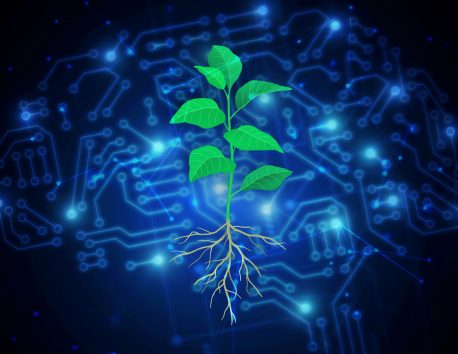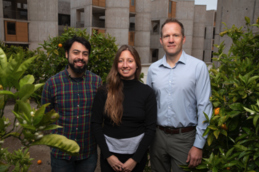AI software revolutionizes plant engineering to combat climate change

At Salk in La Jolla, researchers are collaborating to harness the power of artificial intelligence (AI) to engineer plants that can help combat climate change. They are using a pioneering deep learning software called SLEAP to optimize plant root systems, which will capture and store carbon dioxide from the atmosphere. This innovative research offers a promising solution to mitigate the impacts of global warming.
Originally developed for tracking animal movement, SLEAP has been repurposed by Salk Fellow Talmo Pereira and plant scientist Professor Wolfgang Busch to analyze plant root growth with extraordinary precision and efficiency. The scientists have unlocked a sophisticated tool to expedite the design of climate-saving plants by utilizing this state-of-the-art AI software. This is a pivotal endeavor advocated by the Intergovernmental Panel on Climate Change (IPCC) to limit global temperature rise. 
The study published in Plant Phenomics on April 12, 2024, introduced a new protocol for utilizing SLEAP to analyze various aspects of plant root systems. These include depth, mass, and angle of growth. The painstaking process of manually measuring these physical characteristics posed significant challenges and time constraints to researchers before the advent of SLEAP. The innovative combination of computer vision and deep learning incorporated within SLEAP has revolutionized this paradigm, enabling researchers to achieve accurate and rapid analysis of plant root features without the cumbersome, frame-by-frame manual labor required by previous AI models.
One of the most striking achievements resulting from the application of SLEAP to plants is the development of the most extensive catalog of plant root system phenotypes to date. This invaluable resource facilitates the identification of genes associated with specific root characteristics and elucidates the complex relationships between different root traits, providing crucial insights into the genes most beneficial for optimizing plant designs.
The transformative capabilities of SLEAP were further demonstratedthrough the creation of the sleap-roots toolkit, open-source software that empowers SLEAP to process biological traits of root systems. This toolkit not only expedited the analysis of plant images but also outperformed existing practices by annotating 1.5 times faster, training the AI model 10 times faster, and predicting plant structure on new data 10 times faster, all while maintaining or even improving accuracy.
By seamlessly connecting phenotype and genotype data, SLEAP and the sleap-roots toolkit are poised to revolutionize the efforts of Salk's Harnessing Plants Initiative to engineer plants with enhanced carbon-capturing capabilities and deeper, more robust root systems. These advancements hold the potential to accelerate the development of climate-resilient plants that can significantly mitigate the impacts of climate change.
SLEAP has not only positioned Salk as a trailblazer in plant engineering but has also garnered attention from scientists at NASA, reflecting the global impact and potential of this pioneering technology. With accessibility and reproducibility at the forefront of its design, SLEAP and the sleap-roots toolkit offer an invaluable resource to researchers worldwide, heralding a new era of plant engineering and environmental conservation.
As the collaborative team at Salk embarks on new frontiers, including the analysis of 3D data using SLEAP, the profound impact of this deep learning software on accelerating plant designs and shaping the future of climate change research is already palpable. The journey to refine, expand, and share SLEAP and the sleap-roots toolkit is poised to continue for years to come, cementing their vital role in advancing scientific endeavors and making a significant impact in the global fight against climate change.
This exploration of SLEAP's potential to engineer plants reflects a convergence of diverse disciplines, showcasing the remarkable potential of AI-led innovation in shaping a sustainable future and fostering interdisciplinary collaboration to create profound and transformative scientific advancements.

 How to resolve AdBlock issue?
How to resolve AdBlock issue?